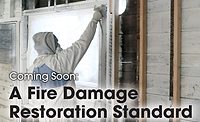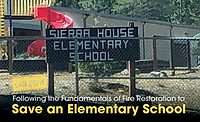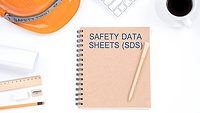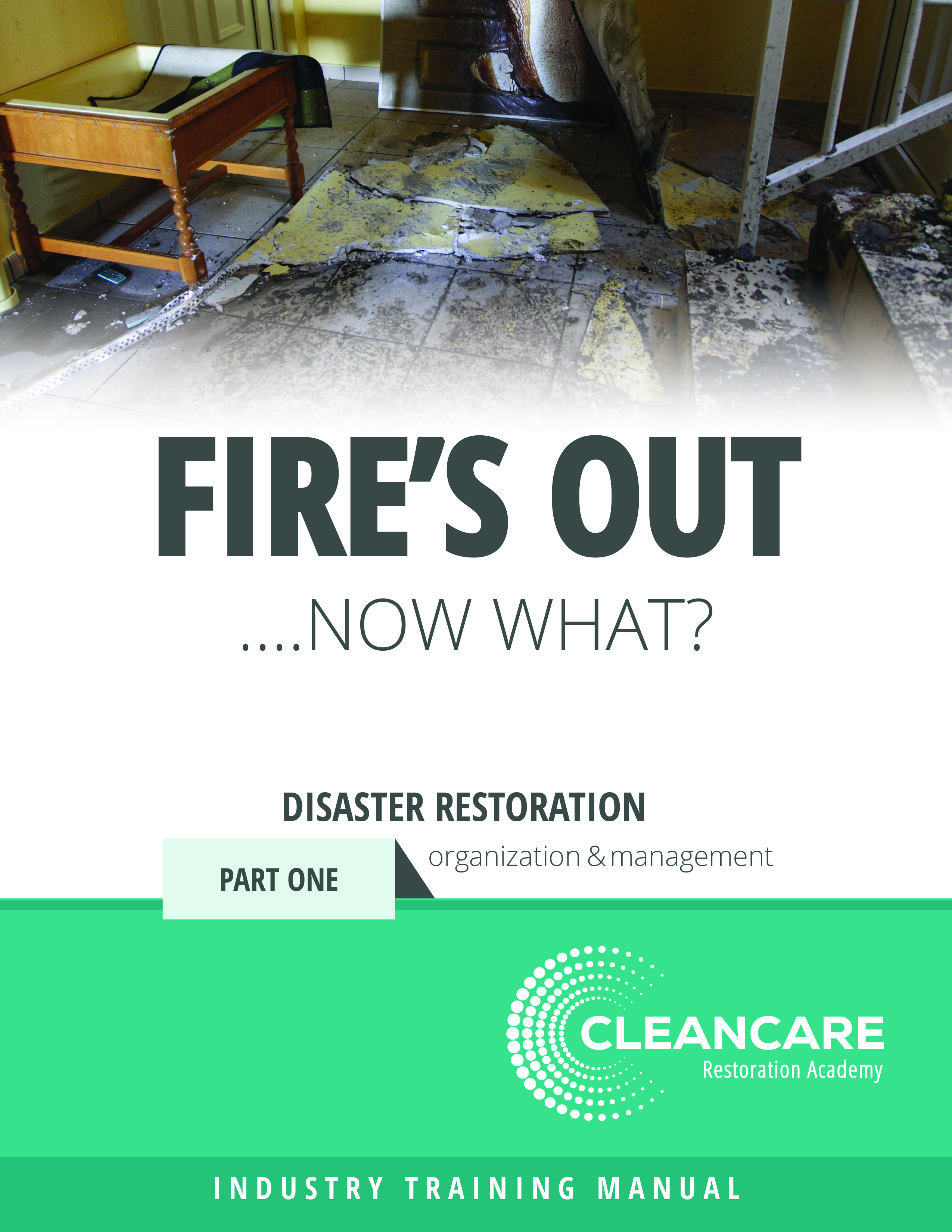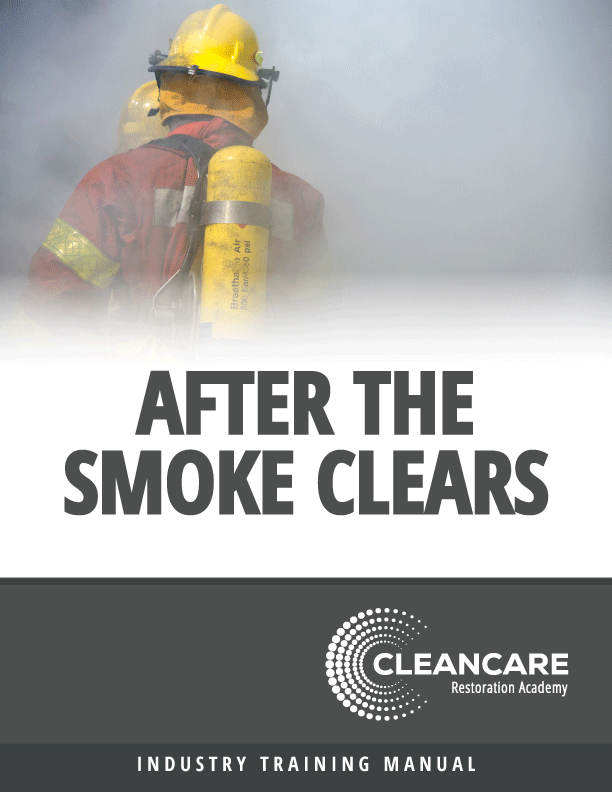IICRC Set to Introduce New Standard as Wildfires Create Major Catastrophes

Photo credit:Toa55 / iStock / Getty Images Plus via Getty Images
Heads up all remediation and industrial hygiene professionals, no matter what your specialization, because something unique and unprecedented is happening. We are on the cusp of having a standard for the disciplines and craft of investigating and restoring after fire.
And it is about to happen twice.
It could be simultaneous, or closely consecutive, yet as ’22 rounds into ’23, we are about to have more than one fire standard, where we have had none. The Institute for Inspection, Cleaning, and Restoration Certification (IICRC) intends to introduce independent standards for restoration after structural fire, and if the timing works, also deliver to our industry a standard for wildfire at the same time (or as close to it).
Herein, we will focus on the latter, a new wildfire standard: IICRC S760.
Wildfires Have Many Facets
Wildfire has unique combustion dynamics, and there is a science and art to assessing the impact and solving the contamination. To the restorer, there are certainly transferrable skills shared by both structural fire and wildfire. It is every bit as true, however, that there are singularities to wildfire – aspects of the craft that must be taught and understood by professionals to assure best possible restoration outcomes. To capture the faceted knowledge of wildfire in a standard has been the goal of an IICRC-assembled consensus body of subject-matter-experts that have volunteered time and experience for multiple years. The result is formally named “IICRC S760 Standard for Professional Wildfire Investigations and Restoration of Impacts to Structures, Systems, and Contents.” It is near enough to plan for, with the release coming in a few months at the latest. Whether you are a restorer, industrial hygienist, adjuster, contingency planner, insurer, or emergency management professional, this is an influential development, and should be broadly welcomed as not a moment too soon.
Wildfire Geography is Increasing Need Everywhere
The need for the S760 Wildfire Standard is obvious, overdue, compelling, and compounding. Devastating wildfires have a major impact on humans, wildlife and certainly the economy. Size and frequency of wildfires are growing worldwide for several factors including hotter and drier conditions, and poor forest management.
General public wildfire awareness is growing, too, including a much-needed perspective adjustment to the geography of wildfire. For decades, ask most ordinary people about wildfire, and they conjure an immediate mental image that does something odd. They would think of not just the thing (wildfire), but also a place — usually California.
However, massive, destructive wildfire is no longer predominantly a phenomenon of California. Actually, Idaho and Alaska had more land burn between 1992-2015, per the U.S. Forestry Service (USFS). However, it is certain that California has more communities in and growing into the wildland urban interface than either Idaho or Alaska. These are areas where structures and wildland vegetation coincide. More people and structures in the way mean more mass media attention for California’s conflagrations.
Destructive wildfire is no longer predominantly a concern of the U.S. West and Rocky Mountains, however, either. According to the US National Interagency Fire Center, more than 48,000 fires involving approximately six million acres (6,153,171 acres) of land has burned in the U.S. since Jan. 1, 2022. That’s the most area covered by wildfire since 2018 (6,939,284 acres)[i] and some of the locations may surprise. Puerto Rico experiences 2000-5000 forest fires annually[ii]. Massachusetts has had more than 800 wildfires to date this year. New Jersey averages 1,500 wildfires every year that consume 7,000 acres of forest[iii], but in June 2022 the largest single fire since 2007 had ripped through 14,000 acres before containment. East or West, at a high altitude or sea level, a wildfire can strike anywhere in the U.S. (or North America, or globally).
Bad Years Will Get Worse
Some ill-advised media sources have pointed towards select statistics to claim recent wildfire activity is a blip, an anomaly. Take California, for example. In 2020 the forest fire numbers were truly awful. Quoting the foreword to CalFire’s 2020 Redbook of wildfire activity statistics: “Begining mid-August, dry conditions, combined with severe lightning storms sparked what became known as the ‘2020 Fire Siege.’ These resulting wildfires led to over four million acres burned, making 2020 one of the worst fire seasons on record.” The gruesome tally was 8,648 events, combining fires from the jurisdictions of CalFire and the USFS, that totaled 4.3 million acres. The 2021 fire season in California was still over 8,000 events, but the burnt acres were 2.5 million. Before blithely accepting that difference as a 40% decrease year-over-year in California, one should look closer. Among many prudent contrasts is to compare 2021 against the five-year average, and the numbers in 2021 show impacted wildfire acreage increased 36%. It is a sensible and sound position to put forward that on average the annual impact of wildfire is getting worse, and that the truly bad years can be expected to be much worse.
Wildfire Season is Oversimplified or Obsolete
There doesn’t seem to be a fire season anymore either. The concept is as obsolete as thinking cleaning carpets will get them dirty faster. That was always a restoration myth/misunderstanding. However, “fire season” did, or used to, exist. Usually (yes, with exceptions), there was a beginning and an end. Typically June through August was conventional wisdom. At best that is oversimplification compounding annually, and maybe always was too narrow to begin with.
In fact, from 1992-2015, more acres burned in the U.S. during June than in any other month (although Alaska’s June activity skews the numbers). And there have always been outliers too. Alberta gets rapid-moving and frequent grassfires in late winter. In Oklahoma, the data reflects a peak in March. Historically, the largest wildfires in Florida have occurred in May. Same is roughly true in Maine, which is April-May, although it was during more than two long weeks in October of 1947 that 200 fires wiped out nine entire towns and burned a quarter of a million acres of Maine’s forests — one of America’s most dramatic fire events.
General rule of thumb: the fire season is spring in the Eastern U.S., earlier on the calendar than common assumptions. According to a 2022 interview with the New Jersey Forest Fire Service, “That’s a time when foliage is just starting to return, so trees and shrubs lack moisture. The lack of greenery also leaves the ground exposed on dry, sunny days when a fire starts and could quickly spread given a breeze. By the time summer arrives, humidity levels typically jump up quite a bit.”
In short, there used to be a time of year that wasn’t wildfire season. But all of this conventional knowledge and wisdom isn’t 100% useful, not anymore. According to research recently published on The Conversation website by Dr. Stefan Doerr of Swansea University, the extended conditions of drought, higher temperatures, and decreased humidity has made for “fire weather” that is 54% “more frequent at the global level. These aggravated conditions dry out landscapes and push up the odds of dangerous wildfires.
“The length of the fire weather season ... has lengthened by 27% globally, but the increases have been particularly pronounced in the Amazon, the Mediterranean and the western forests of North America.”
—Dr. Stefan Doerr, Swansea University
“We found that the length of the fire weather season (when most fires tend to occur) has already expanded significantly in many regions since the 1980s. On average, this season has lengthened by 27% globally, but the increases have been particularly pronounced in the Amazon, the Mediterranean and the western forests of North America,” Doerr wrote.
This research data indicates for the United States the Fire Weather Season Length shows a relative increase of 45%. This supports widespread experience that there aren’t seasonal respites any longer. Experts have said in California that “wildfires are effectively becoming a year-round threat[i].
Although, as of late August, the season in 2022 has been described as having a calm start, this year has been the most active in 10 years. The active season couldn’t have started any earlier. On New Year's Day 2022, the Marshall Fire was roaring through the Colorado suburban communities of Louisville and Superior destroying more than 1,000 buildings, burning 6,000 acres, and leaving behind more than $500 million in damage[ii]. The Marshall Fire is arguably a cautionary bellwether. It was shockingly intrusive into the suburbs, and very outside what has been traditional fire season.
Wildfire – Increasing Need for a Standard
From 2019 to 2020, the average number of wildfires in the US increased by 959% and the median number of wildfires increased by 46%. The statistical data out there is quite alarming. Especially considering that studies show one in five single-family homes in the U.S. is at risk of being in a wildfire over the next 30 years. That’s crazy. Just to put that in perspective, each year the odds of being hit by lightning is about 1 in 500,000 and being attacked by a shark is 1 in 5,000,000. So based on the statistical data alone, you might think an existing standard of care or two might already be in the public domain, at least for impact assessment.
Well, excuse the pun, but we wouldn’t bet your house on that. It is fact, in 2022 and prior there are currently no published, recognized standards that numerically quantify and establish minimum threshold concentrations of settled char or other wildfire residue particles.
Take note, restorers. The uncertainty inherent to having zero assessment standards rolls right downstream into uncertainty in how remediation is done, and what you do and don’t get paid for.
To restate the present predicament, assessing the visual and other impacts of settled combustion particles to surfaces relies entirely on the best available science, sound data and competent investigative interpretations, not standards. What’s more, currently there is no standardized method used in laboratories for the quantification of fire and combustion particles. None. So consequently, accepted laboratory techniques for particle analysis may involve metrics and standards not intended for evaluating combustion particles after a wildfire event.
Now, don’t let this alarm you. The absence of standards for unregulated materials is not that unusual. Standards or threshold limit values for concentrations of mold, have not been set yet (and perhaps never will). Still, mold claims are filed, inspections are ordered, and remediation is completed.
Aside from asbestos and lead, there are many unregulated contaminants in the built environment for which threshold limits and standards do not exist. Again, in the absence of standards and minimum threshold limits, the disciplines of indoor air quality and environmental health have to this point mostly relied on the best available science, and the professional’s cumulative experience. But as wildfire restoration expands as a discipline unto itself, we need to do better assuring a certain minimum of competence, prudence, experience, education and care. When adopted and embraced by the restoration industry, the new standard can be the catalyst that we all need for wildfire.
The S760 – a Look Under the Hood
Now, let’s roll back the curtains and introduce the IICRC S760 Standard for Professional Wildfire Investigations and Restoration of Impacts to Structures, Systems, and Contents.
Providing a consensus-driven Standard of Care for wildfire investigators and restorers to help achieve safe and positive outcomes is the goal for 18 voting members of the S760 Consensus Body. Also known as the “CB”, this group includes subject matter experts representing interest groups from diversified fields of academia, restoration, industrial hygiene, laboratory, technology/manufacturers, insurance, regulatory and legal.
Comprised of 18 detailed and thorough Sections (plus glossary and appendixes), the S760 standard describes the practical principles, methods, and processes used to investigate, evaluate and restore structures, contents, personal property and HVAC systems which may have been impacted by wildfire smoke emissions.
In addition, the standard will also describe the basic principles governing wildfire particle distribution and eventual settlement on surfaces to aid the restorer in identifying the scope of a project and preparation of a work plan. This standard will also establish methods and processes to investigate and interpret data, restore, and verify the cleanliness of structures and surfaces and items damaged from wildfire smoke.
The S760 will provide the standard of care in cleaning and restoration after wildfire impact as the industry expects from an IICRC restoration standard that has endured the rigors of the ANSI process. What is innovating and perhaps unexpected, the IICRC S760 will also establish standardized methodology for investigations/testing, analytical evaluation and data interpretation when evaluating wildfire smoke damage impact.
IICRC standards typically have been targeted to only enumerate the standard of care for the nuts and bolts specifics of how the prudent restorer does their job. Due to the broad expertise on the Consensus Body from the industrial hygiene and laboratory industries, and the compounding need for a wildfire standard as soon as possible, the aspirations for S760 became elevated. A more expansive initial single document might be more impactful at a time of great need, than two separate standards documents produced potentially years apart, and each with a different CB.
See more articles on CAT Restoration
Because of the expanded scope of this first of its kind standard, the S760 Consensus Body reached out to the American Industrial Hygiene Association (AIHA) and a collaboration of efforts was established to jointly develop Section 13 of the S760 which will focus on the analysis, use, and interpretation of data for wildfire impact.
Well folks, very soon the restoration and industrial hygiene industries will have in their hands the long anticipated S760 wildfire standard. And not a moment too soon!
Sources
According to the US National Interagency Fire Center,” The national significant wildland fire potential outlook for September, October, November and December was released yesterday. Above normal potential is possible in parts of the Northwest, Great Basin, Northern Rockies, Northern California, Oklahoma and the northeastern states.” www.nifc.gov ; also https://www.9news.com/article/news/local/wildfire/2022-active-us-wildfire-season/73-83786339-7acc-4140-a0ea-e7d45f30cd4a
https://www.fs.usda.gov/inside-fs/delivering-mission/sustain/preparedness-midst-wildfire-season
https://nj.gov/njoem/mitigation/pdf/2019/mit2019_section5-12_Wildfire.pdf
The Dataface. When and Where are Wildfires Most Common in the U.S? Jack Beckwith, Michael Hester, and Tyler Wolf
Looking for a reprint of this article?
From high-res PDFs to custom plaques, order your copy today!




